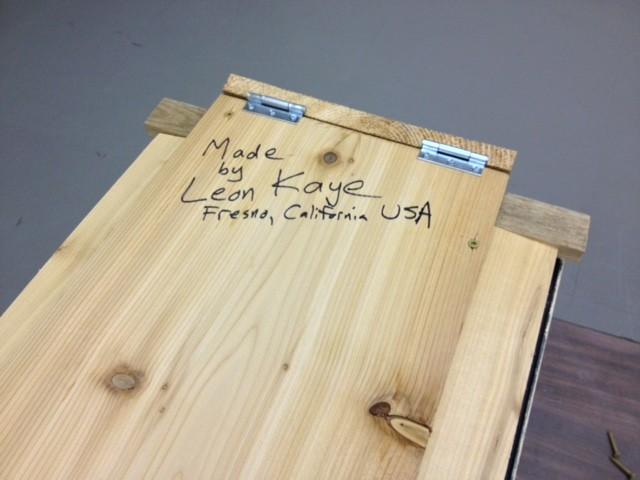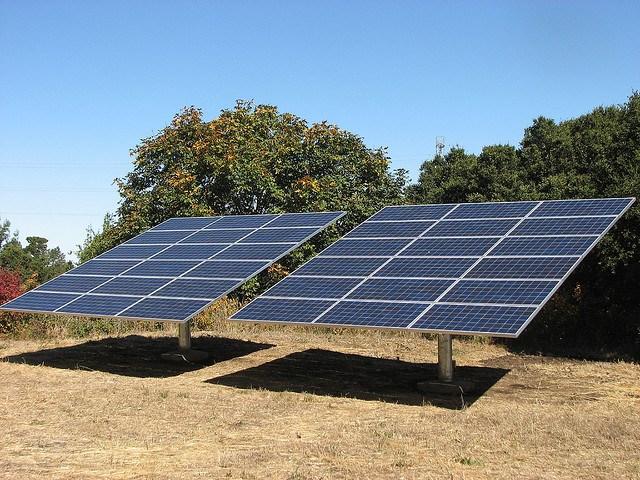The Countries Likely to Best Survive Climate Change


By Jon Whiting Climate change is here, and it will affect every country as it worsens. But the harsh reality is that its effects won’t be felt equally.
The map below highlights that while climate change is caused primarily by rich, technologically advanced nations, its impact will hit the poorest nations hardest. Most European and North American countries are relatively better prepared and less vulnerable to the effects of climate change, while many countries in Africa, Asia and the Middle East exhibit a dangerous combination of high vulnerability and low preparation.
The map, by the Eco Experts, visualizes data from the University of Notre Dame’s Global Adaption Index. The index, published annually since 1995, analyzes 192 countries on 45 internal and external indicators of climate change exposure.
The index is built on two variables: ‘vulnerability’ and ‘readiness,’ for which a country gets a separate mark for each. These scores tally up to produce an overall total indicating how the nation would fare.
The findings highlight the need for richer countries to do more to support poorer nations, helping them prepare for the severe impacts of climate change.
Ultimately, there will be no winners from the effects of climate change. Take, for example, the United States: Despite ranking fairly well in the index, fortifying itself against rising ocean levels could cost more than $1 trillion, according to the U.S. EPA’s sea-level experts. Meanwhile, increased heat waves, droughts and extensive downpours are all expected to wreak havoc on many parts of the country.
Eight out of the top 10 countries considered most at-risk from climate change by the index are located in Africa. Hurricanes, earthquakes, droughts and flooding are all real dangers for some of these areas, and this is compounded by a lack of national strategy to counteract the effects. Chad ranked lowest in the index, suggesting it will be the country hardest hit by climate change.
Seven out the top 10 countries considered least at-risk from climate change, according to the index, are from Europe: Norway ranks at the top and has done so since the index started in 1995. These countries cannot become complacent and must continue to prepare for the impacts of climate change.
Image credit: Flickr/markdoliner
Chinese Court Clears the Way For Environmentalists to Bring Suit


The news from China seems to be improving. First, the Asian nation agreed to target peak carbon emissions and produce 20 percent of its electricity from renewables by 2030. Now China is beginning to take action on pollution, a problem that has become quite severe.
The Chinese Supreme People’s Court just announced that it will reduce the court fees required for environmental groups to bring lawsuits against polluters. The ruling applies specifically to “social organizations involved in public interest litigation” targeting environmental concerns.
Litigation fees are one of the many ways that a government can tilt the playing field one way or another in the continuing conflict between industry and those concerned with protecting the environment for future generations. High court costs make it difficult for small nonprofit groups or individuals to defend their interests in court. This new development will make it easier to hold polluters accountable.
Environmental groups in China are registered and regulated, and there are more than 700 of them. Yet air quality in China is among the worst in the world: Data collected by the U.S. State Department showed that air quality in Beijing only met U.S. standards for healthy air, which require a reading below 35 micrograms per cubic meter, 21 percent of the days in the year. The annual average was 99.4 micrograms. The good news is that the trend shows that emissions declined from last year, but only by a modest 3.3 percent. While the average improved slightly, there were actually 24 “hazardous” days last year, compared with 23 the year before.
The court’s action likely reflected the sentiments of Premier Li Keqiang, who officially declared war on the Chinese smog problem last March. The war plan includes banning high-emissions vehicles and shutting down some coal plants. It might also include the use of smog-clearing drones that are currently in development. The drones will use a parafoil-type design to disperse smog-clearing chemicals that react with the smog particles, causing them to drop to the ground.
But smog is not China’s only pollution problem. The water there is also quite contaminated. China’s own Ministry of Land and Resources, after monitoring close to 5,000 sites in over 200 cities, has proclaimed that nearly 60 percent of all underground water is not safe to drink. In Lanzhou, benzene -- a known carcinogen -- was found in the drinking water, and the taps were turned off for a time. Water officials there blamed industrial pollution.
As evidence of the new crackdown, the Chinese court ordered six chemical and pharmaceutical companies to pay $26 million in fines for discharging acid into the Rutai Canal and Gumagan River at sites near a densely populated area. Those are the largest fines ever levied by a Chinese court for pollution. The lawsuit was brought by Taizhou City Environmental Protection Association, a public interest group that was only established in February. The chairman, Tian Jun, is also the head of Taizhou’s Environmental Protection Bureau.
The fact that the government is now taking serious action will be a major relief to everyone who lives there. And it will force all companies to take the issue seriously whether they had previously been inclined to do so or not.
Image credit: Amjad Hamid: Flickr Creative Commons
RP Siegel, PE, is an author, inventor and consultant. He has written for numerous publications ranging from Huffington Post to Mechanical Engineering. He and Roger Saillant co-wrote the successful eco-thriller Vapor Trails. RP, who is a regular contributor to Triple Pundit and Justmeans, sees it as his mission to help articulate and clarify the problems and challenges confronting our planet at this time, as well as the steadily emerging list of proposed solutions. His uniquely combined engineering and humanities background help to bring both global perspective and analytical detail to bear on the questions at hand. RP recently won the Masdar Blogging Competition and willing be attending Abu Dhabi Sustainability Week
Follow RP Siegel on Twitter.
Deforestation Slows Economic Recovery in Haiti


Haiti has long been plagued by natural catastrophes as well as political-economic strife. Looking to break a cycle of poverty and environmental degradation, multinational businesses, multilateral development banks, foreign aid agencies, non-governmental organizations and local communities are working to help put Haiti on the path to recovery from a devastating 2010 earthquake.
Haiti has the highest rates of deforestation of any country in the world – a mere 2 percent of Haiti's original forests remain. Deforestation on such a grand scale has contributed significantly to a host of profound, persistent socioeconomic problems. Loss of soil from erosion, higher and more extreme incidences of flooding, degradation of water resources, and habitat destruction have all but crippled agriculture and drastically reduced biodiversity in Haiti. Compounding this, shifting seasonal rainfall patterns and less in the way of precipitation are also taking a heavy toll.
Deforestation, agricultural development and the cycle of poverty
Smallholder farms provide the traditional and often sole means of livelihood and survival for the large majority of Haiti's large rural population. It's estimated that around two-thirds of Haiti's population relies on small-scale farming for basic subsistence and their livelihoods.
Official statistics from Haiti's government and multilateral agencies such as the United Nations and World Bank estimate agriculture accounts for some 40 percent of Haiti's GDP and 60 percent of employment. Unofficial statistics put the number of smallholder farms -- ranging in scale from 0.50 to 1.5 hectares (1.24 to 3.7 acres) -- at around 1.1 million, Hugh Locke, co-founder of Haiti's Smallholder Farmers Alliance, a partner with Timberland in a milestone-setting community agroforestry development project, told 3p in an interview. [Ed. note - more on this tomorrow]
Offering a clear indication of just how closely and inextricably intertwined are poverty and environmental resource degradation, rural Haitians – for wont of access to affordable, reliable energy sources – continue to chop down trees in order to survive from day to day.
Besides clearing forests to create new farmland and pasture, rural Haitians use the firewood for cooking and make charcoal for sale in Haiti's cities, where it continues to serve as the predominant cooking fuel, Locke explained. These and other environmentally unsustainable and socioeconomically pernicious practices all but assure the cycle of poverty and environmental degradation will continue across succeeding generations.
Climate change is also having a negative impact on agriculture and rural communities in Haiti, exacerbating the effects of unsustainable farming practices and environmental resource degradation. “There has been a discernible rise in temperatures over the past 10 years,” as well as greater uncertainty regarding the timing and amount of seasonal rains, Locke pointed out.
“There's less and less arable land because of deforestation and climate change – there has been loss of topsoil, erosion and more flooding. The spring rainy seasons have become very unreliable or don't occur at all, particularly in the north, which now suffers from prolonged drought.”
Breaking the cycle with agroforestry
Back in 2009, Locke and fellow SFA co-founder Timote George started searching for a corporate partner that was willing to fund their vision of engaging local farmers in and around the rural, northern coastal town of Gonaïves to plant trees and help reforest Haiti. The 2010 earthquake that left over 200,000 dead, 300,000 injured and all but leveled the capital, Port au Prince, delayed their efforts.
Having subsequently begun to develop an agroforestry co-op in which local farmers would plant trees across a 40-square-mile area, SFA's co-founders approached Timberland, asking if the company would sponsor the project.
“The bottom-line goal was to plant trees. Only smallholder farmers are willing and able to do that, but they're living in poverty, at a basic subsistence level,” Locke elaborated. “They just don't have or can't take the time to focus on anything with longer-term benefits when they have to focus entirely on basic, day-to-day survival.”
On their first approach, SFA's co-founders envisaged the farmer reforestation project taking the same form of the traditional NGO “cash for work” model: Farmers would be paid to plant trees on their lands and provided with basic tools and training.
“The response was that [Timberland was] willing to assist by financing a project for farmers to plant trees, but they wanted to see an 'exit' strategy that would assure the program's long-term sustainability,” Locke recounted. “Demonstrating financial independence was not something I was particularly interested in, but after long, hard study and experience, I've be come a zealous convert."
A model for sustainable agroforestry development
Coming up with a credible sustainable and market-based project model posed a stiff challenge. “It's a huge problem, especially in a place like Haiti where the level of agriculture is so depressed,” Locke elaborated. Previous sustainable developments projects based on a “cash for work” model had been tried and eventually wound up failing.
SFA, NGOs, and the international aid and development community saw direct evidence of that between 1980 and 2000, when the U.S. government sponsored an ambitious program that aimed to pay farmers to plant as many as 100 million trees across Haiti. The program, Locke recounted, “came with the best intentions. They handed out trees, paid the farmers and provided training, but only a handful [of the trees] lived because they had no immediate economic value to the farmers.”
The fundamental flaw in such projects, Locke said, is that “if you create a project predicated on continual payments in a 'cash for work' program – you pay them to plant better seeds, improve harvesting and adopt more sustainable agricultural practices – when the payments stop, so do the improvements.
“From day one I realized that, in order for it to be sustainable, at no point would there be a cash exchange to anyone or for anything ... Even given a successful 'cash for work' program, the cash payments will eventually come to an end. No one wants to make payments forever.”
Rather than taking a traditional NGO "cash for work" approach, SFA’s co-founders, in partnership with Timberland, instituted a community agricultural development model whereby farmers volunteer to grow trees in order to earn seed, tools and training. That includes education and training regarding how to cultivate an appropriate mix of plants and tree crops on their lands.
Among a host of associated sustainable benefits, the payback for farmers has been healthier soils, land and water resources, higher quality crops, and greater yields. In sum, after five years the agroforestry project has resulted in a sustainable, robust and resilient mix of plant and tree crops that has raised farmers' incomes and given them free time they have not had for many years to engage in other family and community-based activities and development work.
Tomorrow we'll share the details of the partnership with Timberland.
*Image credits: 1) Smallholder Farmers Alliance; 2) Timberland
Recycling with Purpose: Chevy Volt Battery Cases Become Duck Houses in Russia


Zero waste has become the mantra at companies across the board, from vineyards to CPG giants such as Procter and Gamble. The waste diversion bug has hit General Motors (GM) as well, as the automaker continues to increase the number of its facilities that are landfill-free. The brain behind new ways to get rid of garbage is GM's global manager of waste reduction, John Bradburn, often called the “MacGyver of waste” by his colleagues at the company’s campus in Warren, Michigan.
Among the many ways in which Bradburn’s team diverts garbage from permanent interment in dumps has a human, as well as an ornithological, side to it. GM’s continued success with its Chevy Volt means more batteries moving through the company’s supply chain as they are hauled from suppliers’ warehouses to their final installation within a new Volt. Unfortunately, the composite that does a fine job protecting the cases during their transport is difficult to recycle. But several years ago, Bradburn found a way to repurpose these cases, and he made many friends with conservation groups in the process.
These battery cases, which have an A-frame shape to them, can easily be converted into bird and bat houses. With the addition of some scrap wood, hinges and a few screws, hundreds of these cases have been built and distributed across GM’s facilities, the United States and even overseas. These houses have become a lynchpin within GM’s wildlife habitats program as they have helped to provide nesting spaces for bats, wood ducks, owls and bluebirds.
Chevrolet employees have worked with NASCAR and volunteer organizations to install these boxes around the vicinity of a racetrack in South Carolina. Now, these boxes are finding their way across the Pacific Ocean in eastern Russia.
It turns out the scaly-sided merganser, a species of duck that live along the border area between China and Russia, have taken quite kindly to these boxes. As is the case with most birds, spring is a critical time for this breed of ducks as they look for safe place to lay their eggs. With only about 2,500 known to exist in the wild, providing a secure home for these ducks is crucial to their survival.
The design of these bird houses allows a local NGO to monitor the houses without the need for workers to approach them too closely, which would not only spook the birds, but also leave a scent trail for their natural predators.
When designed for bats, they achieve another purpose: They eliminate the need for insecticide as bats do an effective enough job ridding an area of bugs and other pests.
And from Boy Scouts to student groups, they offer GM an engaging way to work with local volunteering organizations. Plus they are easy to build: With the assistance of David Tulauskas, GM’s director of sustainability, we could assemble one in a few minutes. The result is a unique way for the automaker to reach out to the community and develop a role in local and international wildlife preservation.
Image credits: Leon Kaye
Based in California, Leon Kaye has also been featured in The Guardian, Clean Technica, Sustainable Brands, Earth911, Inhabitat, Architect Magazine and Wired.com. He shares his thoughts on his own site, GreenGoPost.com.
Disclosure: GM covered the cost of Leon Kaye’s attendance at NAIAS.
Ecolab's Minnesota Offices to Go 100 Percent Solar


Yesterday we reported on Minnesota's efforts to increase the use of solar power in the private sector by requiring utility companies to ensure that at least 1.5 percent of their power is derived from solar sources. It's a bold idea, but one that seems to be creating some interesting synergy between utility providers and private businesses in the state.
Fortune 500 company Ecolab has announced it will join the renewable energy initiative by going solar at its St. Paul, Minnesota offices. The company, which is a global leader in energy, hygiene and water technologies, has signed a deal with SunEdison to purchase enough solar power to offset 100 percent of the electricity used by the 2,500 employees that staff its St. Paul headquarters.
It's a another boost to local utility Xcel Energy's efforts to meet the 1.5 percent mandate, and the move will work nicely with the state's self-assigned clean energy goals, as well. Minnesota has one of the highest renewable energy targets in the country and looks to be off to an optimistic start in meeting that 31 percent minimum by 2020.
SunEdison says it will kick off the project with its 200 megawatt solar array construction, whichwill be located in the Twin City area. The so-called solar gardens will be spread over 15 to 20 sites and will be managed by Bethesda, Maryland-company Terraform Power.
Ecolab's contract for 16 megawatts will meet part of that goal, making it the first large company in Minnesota to go completely solar. And, as the anchor tenant for that investment, it will provide a platform for other smaller investors to get involved. According to state law, there must be at least five subscribers involved in a given solar garden, and each garden must be no more than 1 megawatt in capacity. Ecolab's plan to go solar means not only a complement to Minnesota's renewable energy commitment, but also an encouraging boost to small business investment in the state.
Image of St. Paul, MN: Tony Webster
Benefit Corporation Laws: Delaware vs. California


Editor's Note: This is the first post in a two-part series that highlights notable differences in benefit corporation law in two influential states, Delaware and California. This post originally appeared on Law360.
By Jonathan Storper
Benefit corporation law has been enacted in 19 states, including Delaware, California, New York, New Jersey, Vermont, Maryland, Virginia, Louisiana, South Carolina, Arizona, Arkansas, Colorado, Massachusetts, Nevada, Oregon, Hawaii, Illinois, Rhode Island, Vermont and the District of Columbia. Ten other states have introduced the legislation.
For the first time, this new corporate form provides a legal basis for companies to have a positive social and environmental purpose in addition to creating shareholder value. Without it, the company's responsibility is to maximize value to shareholders.
Entrepreneurs find the form attractive because it provides a simple and consistent platform to protect a corporate mission and balance it with shareholder value instead of creating complex and expensive corporate class structures, which are of limited value to protect the mission in certain circumstances.
To be successful, however, founders and investors must be aligned on core values, revenue objectives and exit strategies, perhaps to a greater degree than with general-purpose corporations. This is the first new corporate form with a national scope to be introduced into American law since the limited liability company in 1977. Delaware is of particular significance because it is the recognized leader in corporate law, and over half of all public companies are domiciled there.
California is the largest state and has provided the country with the benefit corporation model legislation. Delaware differs from the model legislation in notable ways. This article compares the two states.*
*Citations to the CCC refer to the California Corporations Code and DGCL refers to the Delaware General Corporation Law.
What is a Benefit Corporation?
Benefit corporations fundamentally change how a company is permitted to act. A benefit corporation is a for-profit corporation, but in addition to creating value for its shareholders, it has three additional attributes: social purpose, accountability and transparency.Social purpose: A difference in specifics
In addition to creating shareholder value like other for-profit companies, a benefit corporation must provide general public benefit. In California, this is defined as "a material positive impact on society and the environment taken as a whole." CCC 14601(c). The articles may (but are not required to) state a specific public benefit. Specific examples include providing low-income individuals or communities with beneficial products or services, preserving the environment, promoting economic opportunity, improving health, and promoting arts, science and knowledge. CCC 14601(e). The California General Corporation Law applies to benefit corporations except when in specific conflict. CCC 14600.
In Delaware, a benefit corporation must produce a general and specific public benefit and operate in a "responsible and sustainable manner." DGCL 362. “Public benefit” means a positive effect (or reduction of negative effects) on one or more categories of persons, entities, communities or interests (other than stockholders in their capacities as stockholders): of an artistic, charitable, cultural, economic, educational, environmental, literary, medical, religious, scientific or technological nature.
A two-thirds vote is required to change the specific purpose in both states. CCC 14610(d); DGCL 363(c).
Accountability: Performance assessments vary
In California, the corporation must assess its overall social and environmental performance on a yearly basis using an independent third-party standard, many of which are free to the public. The assessment does not need to be audited or certified by a third party, however. CCC 14630.
The standard must be developed by an entity that has no material financial relationship with the corporation, and the criteria and standard development process must be publicly available. In addition, the amount and sources of financial support for the entity developing the standard must be publicly disclosed, along with any relationships that could reasonably be considered to present a potential conflict of interest. CCC 14601(g). The purpose of these requirements is to prevent the corporation from using an assessment tool that is self-serving.
The Delaware corporation must consider the impact of its actions upon not only the shareholders but also the promotion of the company's public benefit purpose and the best interests of those materially affected by the corporation's conduct. DGCL 365.
Unlike the model legislation promulgated in other states (including California), Delaware benefit corporations do not have to assess such impacts using an independent third-party assessment standard, unless so specified in the corporation's certificate of incorporation. Otherwise, the board is empowered to make such assessment on its own. This is one of the major differences from the model legislation.
Still, the Delaware law gives a nod to best practices by making the third-party standard optional.
Transparency: Different options
The California benefit corporation must report its overall social and environmental performance to its shareholders and the public in an annual benefit report. The report must include the third-party standard selection process, the ways in which the benefit corporation pursued any general or specific public benefit during the year, and any circumstances that hindered the creation of the public benefit. CCC 14630(a). The statement must be sent to shareholders and posted on the company's website annually within 120 days following the end of the fiscal year. CCC 14630(b) and (c).
The Delaware corporation must, by contrast, affirmatively identify itself as a public benefit corporation by including those words, or the abbreviation "P.B.C." or the designation "PBC," in its name. DGCL362(c). California has no such requirement.
The Delaware benefit corporation must also, no less than biennially (annually in California), provide its stockholders with a statement as to the corporation’s promotion of the public benefit identified in the certificate of incorporation and the best interests of those materially affected by the corporation’s conduct. DGCL 366(b).
The statement required by Delaware is similar to California but notably different: It must include the objectives the board of directors has established to promote such public benefit(s) and interests; the standards the board of directors adopted to measure the corporation’s progress in promoting such public benefit(s) and interests; objective factual information based on those standards regarding the corporation’s success in meeting the objectives for promoting such public benefit(s) and interests; and an assessment of the corporation’s success in meeting the objectives and promoting such public benefit(s) and interests.
The charter documents, however, may require that the corporation provide the statement more frequently than biennially, make it available to the public, use an independent third-party standard in connection or attain a periodic third-party certification addressing the corporation’s promotion of the public benefit(s) identified in the certificate of incorporation and/or the best interests of those materially affected by the corporation’s conduct. DGCL 366(c).
Once an optional provision is adopted, a two-thirds vote of shareholders is required to terminate it. DGCL 363(c). These options appear to be intended to allow a Delaware benefit corporation to structure itself according to the model legislation if it wishes.
Check back tomorrow for practical differences between benefit corporation laws in Delaware and California -- from incorporating to director's duties.
Image credit: Flickr/notionscapital
Jonathan Storper is a partner in Hanson Bridgett LLP's San Francisco office.
*The opinions expressed are those of the author(s) and do not necessarily reflect the views of the firm, its
clients, or Portfolio Media Inc., or any of its or their respective affiliates. This article is for general
information purposes and is not intended to be and should not be taken as legal advice.
Chipotle Says 'No' to Pork After Supply Chain Violations


Chipotle Mexican Grill is serious about upholding its Food With Integrity program. It’s so serious about it that the Mexican food chain suspended a pork supplier for violating the company’s standards, the Associated Press reports.
As a result, Chipotle stopped serving pork at hundreds of its restaurants. It’s the first time the company has had to stop serving an ingredient.
Chipotle found out about the supplier’s violations through a routine audit, and most had to do with how the pigs are housed. Chipotle requires its pork suppliers to house pigs humanely and not in cramped pens. The company’s website states that it has sourced 100 percent of its pork from producers who follow its guidelines.
When it comes to beef that doesn’t meet its “responsibly raised” standards, Chipotle has posted signs in a restaurant stating that the beef has been “conventionally raised.” "In this case, we won't make that kind of substitution," Chipotle spokesperson Chris Arnold told the AP.
This time around some restaurants, including locations in New York City, have signs posted that state, “Sorry, no carnitas.” Hundreds of restaurants, totaling about a third of the chain's total base, have had to stop serving pork, the AP reports.
Fortunately for store operators, pork only accounts for about 6 to 7 percent of Chipotle’s entree orders. Arnold said he hopes the supplier will remedy the problems and be “back on board” eventually.
Sow gestation crates are cruel confinement systems
There's a reason why Chipotle is so serious about keeping its pork supply chain free of confinement systems. Many breeding pigs in the U.S. are kept in sow gestation crates for nearly their whole lives. The crates are about 2 feet wide, leaving pigs with no room to turn around or take more than one step. The Humane Society of the U.S. states that “due to the duration and severity of their confinement, these pigs' suffering is among the worst of all factory-farmed animals.”
Farm Sanctuary details the effects gestation crates have on the health of pigs. The floors of gestation crates are typically made of slats that allow manure to fall through, so sows live above their own waste. That exposes them to high levels of ammonia, making respiratory disease common. Standing on the floors of a gestation crate, which are hard and unnatural, causes harm to sows’ feet, including foot injuries and damage to joints.
"We've got to treat animals right, and gestation stalls have got to go,” said Dr. Temple Grandin, a renowned animal welfare scientist. "Confining an animal for most of its life in a box in which it is not able to turn around does not provide a decent life."
Companies are phasing gestation crates out of their supply chains
Over the past few years, several top companies have announced commitments to phase out gestation crates, including fast food chains such as McDonald’s, Burger King, Wendy’s and Arby’s.
Pork suppliers like Smithfield Foods, the world’s largest pork producer, and Hormel Foods, the maker of Spam, both announced that their company-owned facilities will be gestation-crate free by 2017. The pork producer Cargill has already phased around 50 percent of the gestation crates out of its operations.
Image credit: Thomas Hawk
Four Action Steps to Prepare for the CDP Climate Change Questionnaire


By: Stewart Rassier
It's the new year; have you set your environmental footprint goals for 2015 and beyond? Setting emissions targets can be a daunting task, but it is also a very tangible way to demonstrate a strong commitment to corporate citizenship.
More than 4,500 companies begin the process of measuring, managing, and mitigating their contributions to climate change by completing the CDP Climate Change Questionnaire, which is a key standard for environmental emissions reporting.
Why companies participate in CDP
Initially, companies participated in CDP because of requests from investors and internal stakeholder interest. While these factors persist, an emerging third factor is driving participation: Large companies with comprehensive supply chains are strongly encouraging their business partners to participate.
A company should consider participating in CDP to:
- Understand the company’s exposure to climate change challenges
- Assess its own environmental impact
- Create a clearer strategy for addressing environmental impacts
- Build better, more transparent relationships with their investors, suppliers, communities, and customers
If you are a first-time responder or looking to improve your CDP score there are a number of actions you can take to increase your transparency and performance, including:
- Read and review the full questionnaire before you begin answering any questions. It may seem rather simple, but many respondents do not read each question completely or realize there are multiple parts to each question.
- Review responses from other companies. Transparency is important to CDP and this process, which means most CDP climate change questionnaires are publicly available on the CDP website. For first time responders, these questionnaires are a great resource to see the type of data reported and the quantity and quality of the data. You might even consider searching for industry peers to compare and benchmark.
- Processes and data management systems. The better your processes, procedures, and data, the better shape you will be in. Ask:
- What data and information do I need?
- Where can I get this information?
- Who else within my company needs to be involved in this process?
- What are my project plans? Deadlines?
- Strategy is important. Respondents have a tendency to focus on the numbers and data when responding to the climate change questionnaire, to the detriment of the strategy section. Review the strategy section closely and be able to clearly articulate why climate change is important to the business and how you are mitigating your impact in the future. Ask yourself: Beyond the data, what other information do I need, especially when it comes to some of the strategy questions?
Corporate Citizenship practitioners participating in CDP consistently tell me two things about their experiences responding to CDP. One, it is a lot of work. Two, it is one of the most credible and effective processes for demonstrating corporate citizenship leadership.
What has been your experience with the CDP questionnaire?
Stewart Rassier is the Director of Executive Education and Advisory Products at the Boston College Center for Corporate Citizenship. He has more than 11 years of sustainability education, communications and advisory experience working with leading companies worldwide. Stewart teaches CDP Reporting: Disclosing Environmental Impacts for the Center for Corporate Citizenship.
'Solar Gardens' Growing New Potential for Energy in Minnesota


Environmental organizations have been trying to figure out how to encourage more private investment in solar power for some years now. So has the federal government, which has provisions in place that allow and encourage both residents and small solar operators to sell power to utility companies without a fee or penalty.
Oftentimes these two federal laws are viewed as contentious issues by utility companies -- which are required by law to buy the solar-generated surplus from operators, often at a lower rate than the commercial price set for the power.
One of the more innovative ideas that has come up to address this need is Minnesota's solar energy legislation, Statute 216B.164. The statute was enacted in 2013 to help the state meet its self-mandated clean energy goal of 31 percent by 2020. (The EPA suggested goal for Minnesota for 2030 is 15 percent.) Provisions in the statute call on local power companies to ensure that at least 1.5 percent of their power is produced from solar by 2020. Minnesota Statute 216B.164 also lays out provisions for creating "solar gardens" that are supported by private investment, calling for these projects to begin coming online in 2014.
In December, Xcel Energy, which provides about 50 percent of the state's utility sales, launched its Solar *Rewards Community program in Minnesota. The program encourages businesses and residents to invest in solar gardens that are run independently by a single anchor operator and can be supported by other investors. It allows five or more investors to join together, and the resulting solar garden can be built anywhere in the investors' county or an adjacent one. According to the Minnesota nonprofit Fresh Energy, the array can be up to 1 megawatt (about 4 acres), and credit is reimbursed on the investors' utility bills.
Fresh Energy's Executive Director Michael Noble said the program not only has the potential to boost the state's renewable energy portfolio, but it also promotes commercial investments in the state.
"This is in the very early stages," said Noble, who pointed out that potential solar operators still have a bit of legwork to do in order to demonstrate that their projects would be viable.
"[Every] single one of these projects is going to need four things in order to get built," said Noble. "They are going to need customers. They are going to need financial [funding]; they are going to need to have land, or a building or a place to put it; and they are going to need to have an interconnection." In other words, said Noble, "They are going to need to be well connected to the electric grid and to have the power flow into the system."
Still, it's encouraging that Xcel received more than 400 proposals to build solar gardens within a week of launching the program on Dec. 12.
Even though the state has limited each individual solar garden to a maximum of 1 megawatt, said Noble, investors have the ability to build more than one array. The gardens can also be built back to back, encouraging larger corporations with sufficient capital to construct multiple solar gardens -- or to act as anchor tenants for a network of smaller companies or single investors.
Noble pointed out that this structure also makes it easier for small investors. These include residents who want to be able to supplement their electrical energy to invest in part of an installation but don't necessarily have the credit or the capital to assume the cost of a garden or a series of adjacent gardens.
"The homeowner part of this is more difficult because you have the credit-worthiness problem," explained Noble. "If you have a credit score of 650, can you get the best financing you need to build a $35 million solar farm?" He said large business deals like this -- what he referred to as "mall developments" -- often require an anchor tenant that can oversee the larger portion of the costs, thereby making it possible for individuals, families or small companies to chip in and increase the community investments in solar power.
And that's the best part about Xcel's program, said Noble.
"I love the idea that everyone is eligible to participate: Anyone who has an electric meter, whether [it is] an organization or a nonprofit, or a business or a homeowner; whether your house faces south, or your house is in the shade."
The conventional worry that homeowners have about whether their property receives enough sun to support solar power doesn't apply here, since investors don't have to limit their solar garden to their own property. They can build it on the next block or in the next county, as land and opportunities permit. "Now everybody has a good location for solar power," said Noble.
Image credit: Mike Weston
Top 10 Carbon Market Predictions for 2015


By The Climate Trust
Last week, the Climate Trust, a mission-driven nonprofit that specializes in climate solutions, with a reduction of 1.9 million tons of greenhouse gases to its name, announced its second annual prediction list of 10 carbon market trends to watch in 2015.
The trends, which range from increased climate change adaptation measures at the state and city-level to new protocols for agriculture and forestry, were identified by the Climate Trust based on interactions with their diverse group of working partners—government, utilities, project developers and large businesses.
“We’re excited to once again look at the overall market with fresh eyes and identify areas of potential movement and growth,” said Dick Kempka, vice president of business development for The Climate Trust.
1. Allowance and offset demand will increase in 2015
The second compliance period for California’s cap-and-trade system began the first of this year. Distributors of transportation fuel and natural gas have officially joined the ranks of other capped, covered entities, and with the addition of these fuel distributors, the emission cap immediately more than doubles in size. As a result, The Trust predicts that cost containment mechanisms such as offsets and banking will become much more significant components of the cap-and-trade system.
A recent whitepaper estimates the current market value at $2 billion annually, and anticipates that this will increase to $4 billion in 2015. To date, the California market has largely been viewed as an operational success, however, some have suggested the system has not yet experienced stresses that could result from drastic and unplanned energy use spikes—escalations triggered by weather events such as drought, hot summers, and cold winters. The Trust believes that the introduction of transportation fuels under the cap, coupled with allowance uncertainty and shortage of offsets, are likely to increase the demand for both allowances and offsets in 2015.
2. ARB will add new protocols for agriculture and forestry
California Air Resources Board (ARB) is on the verge of approving the new compliance offset protocol for rice cultivation projects. While land in Alaska, Hawaii, and the U.S. territories is not currently eligible for ARB compliance offset projects, The Trust finds it likely that portions of Alaskawill soon be eligible to participate in the forestry cap-and-trade program. Additionally, we anticipate nutrient management will be the next methodology type to be adopted as a compliance offset protocol in the agriculture sector, with the process of being adopted commencing in 2015. An avoided grasslands conversion protocol is likely to follow suit.
"The rice protocol allows U.S. rice farmers to generate offsets to sell in California’s carbon market, providing a new source of revenue for growers while contributing to the state’s clean air goals. More importantly, it sets the stage for the ARB to develop an offset protocol focused on nutrient use efficiency which would apply to practically any crop grown in the United States,” said Robert Parkhurst, Agricultural Greenhouse Gas Markets Director for Environmental Defense Fund.
3. Dramatic growth in conservation finance
Developments in the green bond arena will continue to advance the scope of these instruments used to finance climate change solutions, while meeting fixed income yield and risk requirements. Green bonds that fund projects or assets with climate benefits experienced exceptional growth in 2014 with $35 billion issued; triple the 2013 figure.
According to Sean Kidney, CEO of Climate Bonds Initiative, the market is expected to reach $100 billion in 2015 and to treble again by 2018. Odin Knudsen, president and CEO for Real Options International, cautions that as the market expands there will also be a threat of greenwashing. Independent due diligence of green and climate bonds must be strengthened if the market is to prosper and fulfill its promise. Despite this, agencies, governments, municipalities and corporates are seeing the enormous opportunity that green bond finance offers to accelerate mitigation and adaptation efforts in our changing climate.
An article in EMEA Finance confirms that there is a "shortage of supply and too much demand. An ordinary vanilla bond which is green as a bonus feature is an unbeatable proposition for investors who have publically expressed the importance of addressing climate change.”
4. Increased focus on post-2020 market
It was just a few short years ago that observers questioned whether carbon markets would continue beyond the end of the Kyoto Protocol in 2012. Carbon markets have not only managed to survive, but slowly expanded, with longer term prospects for carbon suggesting that markets will continue to grow.
Gov. Brown of California recently indicated that the state would announce plans to extend its market to 2030. Thus far, much of the activity has been at the state level, but in a post-2020 world, experts are predicting a shift. “… carbon pricing is going to have to start at the national level, rather than be cascaded from the top down. Many nations are pursuing such an agenda, including a number of emerging economies such as China, South Korea, South Africa and Kazakhstan,” notes David Hone, chief climate change advisor for Royal Dutch Shell.
Even in countries where carbon pricing has struggled to gain a foothold, such as Australia, there is a strong belief of its inevitably. In fact, 80% of Australian businesses noted in a recent survey that adopting post-2020 carbon reduction commitments is key to maintaining relationships with trading partners. The shift in leadership back towards the national level is an encouraging sign for increasing the rate at which global carbon emissions are reduced.
5. Increased public sentiment and political will around impacts of climate change
Naomi Klein’s new book, "This Changes Everything: Capitalism vs. Climate," illustrates the growing sense that after dragging our feet on climate mitigation policy for over 25 years, our time is up, and the consequences for inaction are larger than ever.
This sentiment is reiterated in a recent report by co-chairs of the high-profile Risky Business Project, Economic Risks of Climate Change in the U.S.; and paired with the onslaught of recent climate studies and media coverage, people are starting to take notice. Further, research out of University of Michigan shows that a majority of voters from both sides of the aisle favor a carbon tax if the revenues are neutral or dedicated to renewable energy programs.
In the U.S., the EPA is seeking to reduce emissions from coal plants through section 111(d) of the Clean Air Act. President Obama and President Xi Jinping of China also pledged to reduce carbon emissions after years of stalemate. The Trust anticipates that momentum will continue to build with further political action and increased public sentiment around climate change, leading up to the 2015 international climate talks in Paris.
6. Increased adaptation measures at the state and city-level, addressing climate change
The necessity of adaptation measures may seem obvious to folks in green-conscious cities like Portland, Seattle and San Francisco, but perhaps not in other parts of the U.S. Frequently occurring weather disturbances such as heat waves and floods, and a prolonged drought in California—coupled with heightened awareness of fossil fuel-related pollution—will prompt cities and states to focus increasingly on carbon reduction mechanisms. Mechanisms could include options such as carbon markets, incentives, or taxes. In response to extreme weather, California and other states will increase adaptation mobilization, and look for innovative climate change solutions in land, water, energy, and other natural resources.
7. West coast states move forward cautiously on policy
In 2015, the Oregon legislature will determine whether to extend the state’s Clean Fuels Program, which requires certain levels of low-carbon fuels in the state’s transportation fuels supply. Given the outcome of the November elections, which gave the legislature a climate-friendly majority, it is likely the program will be approved—though not without backlash from fossil fuel interests, which will undoubtedly challenge the program on legal grounds. A similar program will be designed in Washington over the coming year as part of a suite of policies proposed by Gov. Jay Inslee of Washington.
The discussion of a carbon tax in Oregon will heat up again in 2015 following the results of a state-commissioned study by the Northwest Economic Research Center. It is likely one or more carbon tax proposals will surface in the upcoming legislative session, though passage this year is uncertain as both Oregon and Washington consider alignment of a regional structure.
8. Increased executive action on climate change
With little hope that Congress will pass legislation to price carbon pollution, the Obama administration will focus on executive action directly through federal agencies. This trend began in 2014, highlighted by EPA regulation of carbon emissions from existing power plants through the Clean Air Act.
On the heels of this announcement, the U.S. and China jointly announced new greenhouse gas emission reduction targets. To meet these new targets—emissions 26 percent below 2005 levels by 2025—further action will be needed. Meeting these new goals will likely require focusing on reducing potent, short-lived greenhouse gases like methane; the EPA is soon expected to release more stringent methane emission standards for the oil and gas industry. The USDA will also increase its focus on potent greenhouse gases, by providing additional public dollars to spur the development of agricultural digesters and reduce the nitrous oxide emissions associated with over-application of fertilizers.
9. ARB will clarify regulatory compliance to meet market needs
After invalidating a very small portion of credits from the Clean Harbor facility’s destruction of ozone depleting substances, the California Air Resources Board (ARB) will take a more measured, predictable and cautious approach to policing the offset market in 2015. ARB has used this invalidation to demonstrate to environmental groups that it is rigorously and closely monitoring the integrity of the offset market. To contain costs, ARB knows it must also enable a functional offset market.
ARB will begin by clarifying how environmental violations must be directly related to projects, not downstream, in particular for forestry and livestock projects. With a clearer understanding of which potential violations could be grounds for an invalidation based on health, safety or environmental infractions, the perceived risk of invalidation will be reduced. Next year will be less about demonstrating rigorous oversight of the offset market and more about establishing a functional market that can bring high-quality offsets to scale.
10. Subnational jurisdictions will continue to act on addressing emissions
While national commitments have been few and far between the last several years, subnational jurisdictions have been active in designing and implementing carbon pricing systems. In Canada and the United States, policy actions to comprehensively price carbon have come from provincial and state governments. We anticipate that this trend will continue globally, as demonstrated by California advising seven Chinese cities/provinces on implementing a pilot system that will cover a population of 256 million. Heading into 2015, The Trust expects that states will increasingly examine and consider measures to address emissions from politically sensitive activities such as fracking and oil and gas pipeline construction.
“In 2014, many of our predictions rang true, including the role of Big Data through the commencement of Field to Market’s agricultural data collection and the publication of USDA’s Greenhouse Gas Inventory Report,” said Sean Penrith, executive director for The Climate Trust. “The Trust also helped facilitate the first-ever purchase of carbon offsets from the avoided conversion of at-risk grasslands, building momentum for future domestic agricultural offset deals.” Penrith added his appreciation for continued support from the USDA through their Regional Conservation Partnership Program and their newly designated Regional Climate Hubs.
Image credit: Flickr/Ian Sane